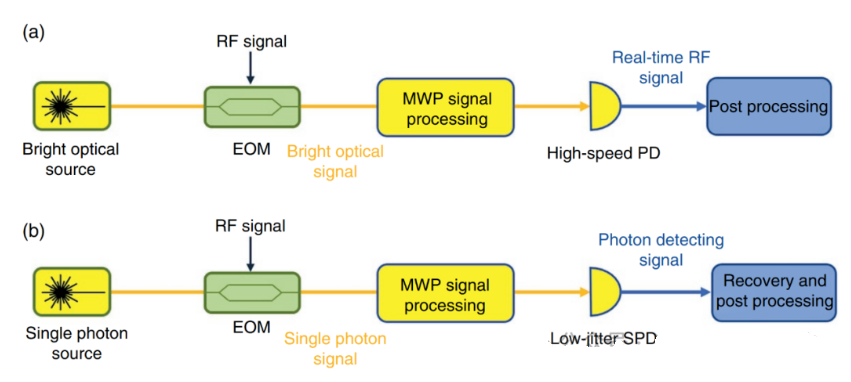Quantum microwave optical technology
Microwave optical technology has become a powerful field, combining the advantages of optical and microwave technology in signal processing, communication, sensing and other aspects. However, conventional microwave photonic systems face some key limitations, especially in terms of bandwidth and sensitivity. To overcome these challenges, researchers are beginning to explore quantum microwave photonics – an exciting new field that combines the concepts of quantum technology with microwave photonics.
Fundamentals of quantum microwave optical technology
The core of quantum microwave optical technology is to replace the traditional optical photodetector in the microwave photon link with a high-sensitivity single photon photodetector. This allows the system to operate at extremely low optical power levels, even down to the single-photon level, while also potentially increasing bandwidth.
Typical quantum microwave photon systems include: 1. Single-photon sources (e.g., attenuated lasers 2. Electro-optic modulator for encoding microwave/RF signals 3. Optical signal processing component4. Single photon detectors (e.g. Superconducting nanowire detectors) 5. Time dependent single photon Counting (TCSPC) electronic devices
Figure 1 shows the comparison between traditional microwave photon links and quantum microwave photon links:

The key difference is the use of single photon detectors and TCSPC modules instead of high-speed photodiodes. This enables the detection of extremely weak signals, while hopefully pushing the bandwidth beyond the limits of traditional photodetectors.
Single photon detection scheme
The single photon detection scheme is very important for quantum microwave photon systems. The working principle is as follows: 1. The periodic trigger signal synchronized with the measured signal is sent to the TCSPC module. 2. The single photon detector outputs a series of pulses that represent the detected photons. 3. The TCSPC module measures the time difference between the trigger signal and each detected photon. 4. After several trigger loops, the detection time histogram is established. 5. The histogram can reconstruct the waveform of the original signal.Mathematically, it can be shown that the probability of detecting a photon at a given time is proportional to the optical power at that time. Therefore, the histogram of the detection time can accurately represent the waveform of the measured signal.
Key advantages of quantum microwave optical technology
Compared to traditional microwave optical systems, quantum microwave photonics has several key advantages: 1. Ultra-high sensitivity: Detects extremely weak signals down to the single photon level. 2. Bandwidth increase: not limited by the bandwidth of the photodetector, only affected by the timing jitter of the single photon detector. 3. Enhanced anti-interference: TCSPC reconstruction can filter out signals that are not locked to the trigger. 4. Lower noise: Avoid the noise caused by traditional photoelectric detection and amplification.
Post time: Aug-27-2024





